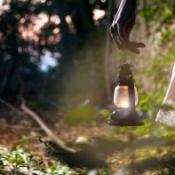 Our vehicle side-view mirrors warn us “objects in the mirror may be closer than they appear,” and I’ve found a similar distortion tends to occur in dating. Often in a new relationship, we fail to see or truly recognize the red flags as we are cruising headfirst into new, exciting territory. But after we veer off the projected path or ultimately crash, in hindsight the red flags are huge, obvious, and quite unmistakable.
Our vehicle side-view mirrors warn us “objects in the mirror may be closer than they appear,” and I’ve found a similar distortion tends to occur in dating. Often in a new relationship, we fail to see or truly recognize the red flags as we are cruising headfirst into new, exciting territory. But after we veer off the projected path or ultimately crash, in hindsight the red flags are huge, obvious, and quite unmistakable.
A good friend of mine recently began dating a guy who seemed great, at least on paper. He was attractive, funny, open, communicative, and seemed eager to spend time together. He talked about long-term goals, being ready for commitment, and acted legitimately interested in her and in seeing where the relationship was headed. But very quickly, the conversations began to involve a lot of drama, and his lack of confidence, personal confusion, and jealous tendencies came out as he projected his personal baggage and insecurities onto her. The relationship ended in a pile of hurtful words and unfair accusations, and left my friend bewildered at how things had changed so quickly and how a seemingly great guy could turn out to be such a train wreck. But as we talked through everything that happened, she began to point to various incidents, saying, “Maybe I should have seen that as a red flag.”
When we are excited about the prospect of a new relationship and are getting to know a potential new partner, it’s easy to overlook the little “red flags” or fail to acknowledge things that may be cause for concern. We want to give the person the benefit of the doubt and may overlook or excuse questionable comments, behaviors, and actions. It’s all too easy to frame jealous questions, controlling actions, or pressure to move too quickly as signs the person is really into us or feels a deep connection. Yet putting on blinders to these potentially telling negative signs can ultimately set us up for more confusion, hurt, and heartbreak.
When I’m working with people in therapy who experience bumps along the road of a new relationship, I often ask if they’ve heard of or read the book He’s Just Not That Into You by Greg Behrendt and Liz Tuccillo. Many people respond, “I’ve seen the movie,” so let me just clarify here the movie doesn’t do justice to the insight the book has to offer. While the title may turn some people off (the ones who ignore the red flags because they really want the other person to be interested), it’s a great and humorous read for anyone navigating the world of dating. It’s been nearly a decade since I read the book, but I still remember and find myself referencing some of its valuable and timeless wisdom.
In particular, I remember a page with a picture of a flag. It reads something like, “Get out a red crayon. Color in the flag. There’s your big red flag.” At the time, this made me chuckle. But over the years, after hearing countless stories in which people turned a blind eye to what I, an objective observer, was able to see as glaring red flags, I find this advice more then just a silly cliché—and actually incredibly wise. On the journey of dating, we need to stop and actively acknowledge the red flags, then pause long enough to determine whether a detour is in order.
We tend to minimize, dismiss, or forget the negatives amid the excitement, lust, and yearning for love that may be present in a new relationship.
What’s particularly interesting is how there may be a gazillion little red flags, yet we may fail to see the bigger picture in terms of how these warnings add up to indicate signs of an unstable or dishonest person, or provide clues that predict a potentially unhealthy and rocky relationship. We tend to minimize, dismiss, or forget the negatives amid the excitement, lust, and yearning for love that may be present in a new relationship.
I now advise the people I work with in therapy to take a piece of paper and fill it with not just one but many small red flags in rows and columns on the page. Anytime something happens in a new relationship that seems off or makes them feel uneasy or uncomfortable, they are to jot it down in one of the red flags. Over time, they develop an unavoidably clear visual of any negatives and can more accurately judge how cautious they should be in investing in the person and pursuing an ongoing relationship.
The concrete visual can help a person be more impartial. A few random red flags may be excusable. We all make mistakes. We all have bad moments, dating anxiety that may get the best of us, or insecurities that need to be worked through. But a lot of red flags that demonstrate a pattern of unfavorable traits, dishonest actions, or unhealthy dynamics should not be ignored. If you keep track and begin noting multiple red flags, stop and ask yourself if you are willing to compromise your relationship goals or sacrifice your well-being for this person of interest.
Cautiously considering red flags can help you make better, more balanced decisions. On the other hand, by overlooking important red flags, you may mistakenly idealize an undeserving person, prolong the struggles the relationship may bring, risk having your self-esteem negatively impacted, and delay the ability to move on and find a healthier, more desirable companion. It’s hard to be patient and insightful when you’re navigating a new relationship, but staying alert to the warnings that may arise can help you arrive at the destination that’s in your best interests.
Reference:
Behrendt, G., & Tuccillo, L. (2004). He’s Just Not That Into You. New York, NY: Gallery Books.

The preceding article was solely written by the author named above. Any views and opinions expressed are not necessarily shared by GoodTherapy.org. Questions or concerns about the preceding article can be directed to the author or posted as a comment below.

 Sometimes, the Best Closure Involves Leaving the Door Open
Sometimes, the Best Closure Involves Leaving the Door Open Learning to Trust Again After Gaslighting
Learning to Trust Again After Gaslighting 5 Communication Skills Every Couple Should Develop
5 Communication Skills Every Couple Should Develop

